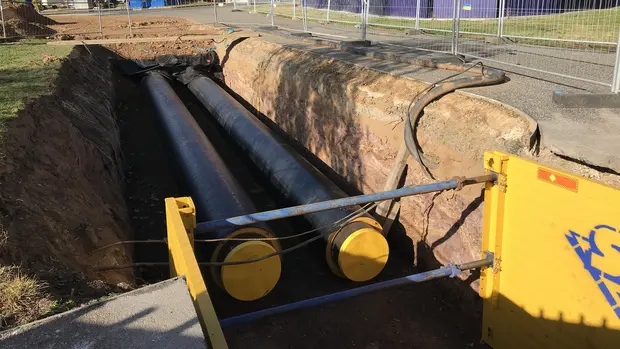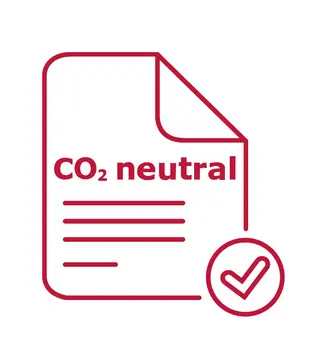Making heat comfortable
Around 80 per cent of a German household's energy requirements are used to heat living spaces and provide hot water. There are various ways of providing the energy required for this. District heating is a particularly sensible option. It offers many advantages over individual heat generation in many individual buildings.
The advantages of our district heating
By connecting to our heating network, you pass on the responsibility for fulfilling the legal requirements to us now and in the future. You do not need your own heating system and there is no need to worry about purchasing fuel.
Less CO₂, more sustainability. Protect the environment with district heating.
By converting your heating system to the SWG district heating supply, you automatically fulfil the requirements of the current Building Energy Act (GEG).
Lower operating costs and minimised maintenance save time, trouble and money.
Make yourself comfortable - we'll take care of the rest. And if a problem does arise, just give us a call and we'll take care of it.
No boilers or tanks - more space for what's important to you. For one thing, the required heat transfer station is much smaller than a condensing boiler or heat pump with a comparable output. Secondly, it requires neither the usual heat storage tank nor a chimney.
No outages - district heating offers you convenient security of supply.
Heat from your region.

District heating in Giessen means: we generate thermal energy highly efficiently and in many plants distributed throughout the city. We supply this energy in the form of hot water to almost 2,800 buildings - from single-family homes to industrial plants - via an optimally insulated pipe network that is over 200 kilometres long. As with central heating in a typical residential building, there are also two pipes in the district heating network: higher temperatures prevail in the flow pipe. The heat reaches the customers through this pipe. The return pipe collects the water that has cooled down in the many buildings and returns it to a heat generator.
This brings the warmth to your home.
District heating means that heat is generated in one or more heating (power) plants and transported directly to customers in the form of hot water via a pipework system.
We generate most of our district heating using the principle of combined heat and power (CHP). This means that heat and electricity are generated simultaneously in a single plant. This technology is particularly efficient and environmentally friendly. We now operate more than 167 CHP plants spread throughout the city of Giessen and the surrounding area.
We transport the heat from these many decentralised generation plants to our customers in the form of hot water via a well-insulated pipeline system. There, the house connection links the district heating network with the transfer station in the house. In the transfer station, the hot district heating water heats the heating and service water via a heat exchanger, which is then fed into the existing heating system with the help of a circulation pump. Once the district heating water has cooled down again, it is pumped back to the generation plant, where it is reheated and the cycle begins again.
Primary energy factor
What is that anyway?
The primary energy factor indicates how much primary energy is required for a certain amount of final energy, depending on the energy source. The primary energy factor therefore takes into account the energy loss during the extraction, conversion and distribution of an energy source. The more environmentally friendly an energy source, the lower the primary energy factor and therefore the lower theCO2 emissions.
Permissible replacement measure for the use of renewable energies according to GEG
The new Building Energy Act (GEG) came into force on 1 November 2020. It replaces the previous Energy Saving Act (EnEG), the previous Energy Saving Ordinance (EnEV) and the previous Renewable Energies Heat Act (EEWärmeG) and brings their regulations together in one law. Like the previous Energy Saving Act for Buildings, the new GEG includes requirements for the energy quality of buildings and the use of renewable energies in buildings.
The GEG stipulates that the heating and cooling energy requirements of new buildings must be covered at least in part by the use of renewable energies. Alternatively, climate-friendly alternative measures such as district heating can be used. The prerequisite is that the district heating fulfils certain criteria, for example at least 50% of the heat can come from highly efficient combined heat and power plants. Heat from SWG fully fulfils this criterion. District heating from SWG is therefore considered a substitute measure within the meaning of the GEG.



